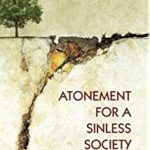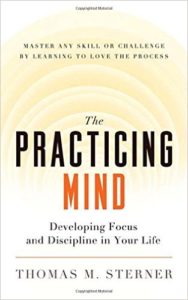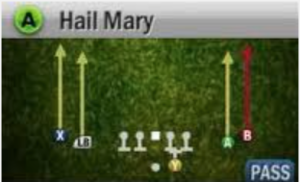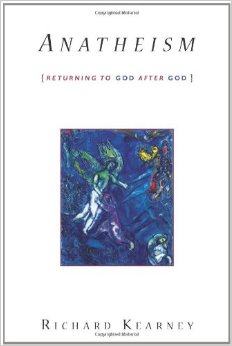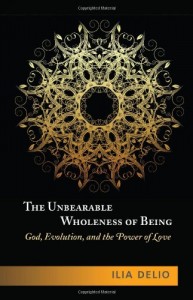
I preached this sermon on April 13th, 2014 at Grace UMC. The text was Matthew 21:1-11.
Jesus has done some interesting things this Lent. He went 40 days without food and water. He had a conversation with the devil. He suggested that people can be born more than one time. He told a woman everything she had ever done. He spat in mud and wiped it on a guy’s face. He brought a stinking, rotten corpse back to life. If you thought all of this was crazy, you haven’t heard anything yet. In today’s scripture, Jesus steals some donkeys, performs a circus-like stunt, engages in a daring act of street theater, and incites turmoil in the streets of Jerusalem. Those who think the Bible is boring haven’t heard this story.
[more…]
This is a chaotic Bible story. To bring some order to this chaos, I’ve compiled a list of the top five most chaotic things about Jesus’s triumphant entry.
Chaos #1
First, Jesus commissions two of his disciples to borrow without permission (steal is such a harsh word…) a donkey and a colt from some unsuspecting person in the town ahead. I wish I could tell you that it was common practice in the ancient Jewish world simply to borrow people’s animals whenever you had need. But I think it was pretty much like borrowing someone’s car without prior permission in our own day.
Chaos #2
Second is one of the most famous blunders in Scripture. Matthew seems to misunderstand the poetic oracle he quotes from Zechariah 9:9, which says,
Rejoice greatly, O daughter Zion!
Shout aloud, O daughter Jerusalem!
Lo, your king comes to you;
Triumphant and victorious is he,
Humble and riding on a donkey,
On a colt, the foal of a donkey.
One of the most common poetic devices in Hebrew poetry is called parallelism. The poetry says one thing on the first line. Then on the second line it says basically the same thing in different words.
Instead of attributing this second line to its poetic form, Matthew thinks Zechariah is talking about two different animals. And were it not poetry, it might make sense to read it this way. In both Mark’s gospel and Luke’s gospel, they portray Jesus riding on a single animal. But Matthew says Jesus sat on them – plural, two animals. Whether Matthew gets this one wrong or Jesus actually rides into Jerusalem circus-style, straddling two animals, either way, it is part of a chaotic storyline.
Chaos #3
Third, you’ve got people taking their clothes off, laying them down on the ground, cutting limbs off trees, and shouting as part of an impromptu parade down the gullet of the most important city in Israel.
Chaos #4
Fourth, if this weren’t enough, they are shouting a messianic proclamation. They aren’t just welcoming Jesus to town. It isn’t entirely clear from the text, but it seems that there are two different crowds. The crowds shouting Hosanna seem to be coming into town with Jesus. And they are doing so with a bold statement. This is “he who comes in the name of the Lord.” A son from the line of David. This guy is the Messiah. They meet the other crowds already in Jerusalem now in turmoil, asking, “Who is this guy?” The Jerusalem establishment had already made clear that this guy wandering the countryside is most definitely not the Messiah. But until this parade down Main Street, Jesus’s movement had been outside of Jerusalem. Now, Jesus is bringing his bold claims right to the doorsteps of Jewish power.
Chaos #5
And last, but not least, yes Zechariah prophesied a king to deliver Israel from oppression coming in humbly on a donkey, but overwhelmingly the Jewish establishment looked to some of the more grandiose images of what the Messiah would do. If we read on in Zechariah and we get a taste of this:
He will cut off the chariot from Ephraim
And the war-horse from Jerusalem.
And the battle bow shall be cut off,
And he shall command peace to the nations;
His dominion shall be from sea to sea;
And from the River to the ends of the earth.
But instead, Jesus comes riding in haphazardly on a donkey borrowed without permission. In fact, it seemed to be intentional mockery of what Jewish leaders expected for their savior.
And when he entered Jerusalem, the whole city went into turmoil. Turmoil, intentionally orchestrated by Jesus’s carefully planned and executed street theater right down Main Street in Jerusalem. Jerusalem was in chaos. Out of control. By design.
A Rite of Passage
I’ve noticed that the desire for control, the need to know all the details seems to be proportional the level of anxiety in any situation. This was true for both my parents and I as we navigated a particular rite of passage in my life.
I purchased my first CD when I was 11 years old. It was an exciting time for me. I imagine it was an anxious time for my parents. It was the first time their precious first born child was dipping his toe into the dangerous waters of the music of the age. What boundaries would they set? How would the music I listened to inform my identity and values? For my first CD, I selected what many music experts agree is the finest album ever made. I’m talking, of course, about Vannila Ice’s, To the Extreme, featuring the hit song, “Ice, Ice, Baby.” This song was taking middle school dances by storm in the early 1990’s. And whatever WZYP and middle school dance DJ’s played defined what was cool. I didn’t see how I could possibly live life as a self-respecting 6th grader without this album. I bought the CD on a trip to WalMart and was excited to get home and put “Ice, Ice, Baby” on repeat. But when we got home, much to my chagrin, my parents felt the need to analyze the lyrics of the music I was listening to. And before long, the verdict was in, my dad would take the CD back to the store.
Both my parents and I, each in our own way, had anxiety that led to our need to control the situation. I was quickly learning that the music you listened shaped your reputation in middle school. I didn’t have a collection of music. If I was going to get one album, this one was the clear choice. My coolness would be obvious from my discerning musical tastes. I was trying to control my coolness.
My parents knew that not every album marketed to preteens was appropriate for preteens. They didn’t want to screw this up. They were anxious about the kinds of messages I would be listening to. And so they exercised their parental control.
I was anxious to be cool. My parents were anxious to train me in the way I should go. Predictably, in response to our anxieties, we each wanted to control things. It’s simply the natural response to anxiety.
Elusiveness of Control
But control has a way of eluding us, just when we’re most anxious to exercise it. Jesus walked into the heart of the control center of ancient Israel just ahead of the most holy time of the year, the Passover, in a way that was designed to unsettle control. Ahead of the events right around the corner – Jesus’s death and resurrection, Jesus took control away from the control center of Jerusalem.
When chaos happens to control, sometimes it causes death and rebirth. Other times it causes controllers to retrench and get better at controlling.
Both will happen in a week’s time.
Rap Attack
I know you all probably think my parents were heartless and cruel monsters bent only on ensuring that I would be the biggest loser at Mountain Gap Middle School. But I think they actually felt sorry for me. They knew how much this album meant to me. It represented my coolness.
So when my dad took the album back to the store, he purchased another album for me. This one was called Rap Attack – a compilation of rap music from the day. It wasn’t what I was looking for. Parents always miss the mark in trying to predict what their kids think will be cool. But I did come to like it.
The ironic thing about this was that the Rap Attack album turned out to be more vulgar than the Vanilla Ice album. But my parents never took the time to analyze it. Control can be a pretty slippery thing.
Jerusalem as Power Center
Perhaps more than any place on earth at the time, Jerusalem, represented control. It was the only truly acceptable place to worship. It was the power center of all of Israel. The ruling class enforced the very detailed and ritualistic law of purity and sacrifice that dominated the Judaism of the time. Even in other, grander power centers like Rome, the government didn’t seek to control the nitty-gritty of everyday life, the way Jewish leaders did.
Short Man’s Syndrome
There’s a stereotype called “short-man’s syndrome.” I know it is an ugly term. And I’m certainly not trying to say that it is true. As a tall person, I want to tread carefully here. But the basic idea can illuminate the psychological situation that Jerusalem’s leaders were in. Short men, the stereotype goes, have gone through life sort of feeling out of power. Second chair at best. They didn’t get picked until last to be on the basketball team in gym class. Their peers didn’t look to them for what music might be cool. And so they have a tendency born out of their pain to control something, because too often others have controlled or ignored them. Whenever these folks find themselves in a position where they do get a little control, they go overboard. Every little thing needs to be micromanaged.
At the time of Jesus’s ministry. Jerusalem was in a situation like this. Technically, they were ruled by the Roman Empire. But Rome didn’t care too much about meddling in internal Jewish affairs. They wanted to keep the peace and order, but as long as that was not threatened, they were happy to let the Jewish people have a bit of autonomy. This was humiliating for Jews, but not as bad as it could be. Not like slavery in Egypt or exile in Babylon. Being technically out of power – perhaps longing for true and full freedom, they exercised an extra measure of control over areas where they did have autonomy. They found themselves in a position with a little bit of control. Something like short-man’s syndrome. When it came to Jesus, they neither wanted him to rock the boat too much inviting extra attention from Rome, threatening the autonomy they did have, nor to permit him to ignore the rules and regulations over which they did have a great deal of control. They took their portion of control extra seriously.
Jesus came to knock over this house of cards. To reveal the illusion of control that prevailed in Jerusalem. Jesus makes chaos out of the so-called control center of Jersusalem. Immediately after this triumphant entry story, he would incite even more choas in the headquarters of control – the Jewish temple, upending the tables of the money changers and the dove merchants.
The “short man syndrome” is really just the human condition. When we feel threatened, when we feel anxious, when we feel pain or rejection – the natural reaction is to do more to control the situation. There certainly can be appropriate times in our lives to seek more control in many situations. But sometimes, when we can’t catch the mouse, the answer isn’t to build a bigger mouse trap. To double down on control. Sometimes, we’ve got to release. Entrust our control in something, someone bigger than ourselves.
Rap Attack & Unintended Consequences of Control
I waited a while before I chose to tell my parents that this Rap Attack album wasn’t exactly squeaky clean. I feared that they would take this album back to the store as well and I’d end up with a Mouseketeers CD or something. Actively making people do things isn’t the only form of control. Sometimes control is the selective and curated flow of information. But eventually I released my control and told my parents that dad’s taste in music was more vulgar than my own. But they didn’t make me take the CD back. Maybe they just stopped caring about what I listened to. Maybe their anxiety had faded somewhat and with it, the need to control. Or maybe they released a bit of their own control when they saw that I had the capacity to know right from wrong in the music I listened to.
One of the best things that can happen to a book, movie, or artistic creation of any type is for it to be banned or censored. It automatically creates demand. Banned books rise to the top of the bestseller lists. If someone doesn’t want you to read a book, there must be something worth reading in there, we tend to think.
Our exercise of control, nearly always has unintended consequences. This is true for our personal lives – our parenting, self-discipline, relationships and more. It’s true for institutions like the church, workplaces, and governments. Control can be a slippery thing.
Cross as Instrument of Control
The cross was an ancient instrument of control. People were hung on crosses in public, in very visible places. Crowds gathered. By design. To incite turmoil in the hearts of the masses at the thought of challenging power. Crucifixions solidified control.
This week, the powers that be, will double down on control. Jews threatened by a man claiming to be the Messiah. Romans willing to permit injustice to keep the peace. They will raise up a man on Calvary to make a public example of him, to control the masses. Because they can. Because this is one thing, they do have power over. The cross was an attempt by the powerful to bring control to the chaos Jesus introduced. We participate in this crucifixion in more ways than we’re willing to admit. The crucifixion is not just a historic event. It is also a harsh spiritual truth about each one of us. We too double down on control because it tempts us with a promise to bring an end to our anxiety, uncertainty, and pain. The cross is our attempt to control; to have things our way. This week, let’s see how that works out for us.
Would you pray with me?
Lord, we are often so hopelessly reliant on our own sense of control. In truth we know it is the very opposite of faith. As we witness the events of the week ahead of us, let us be witnesses to how our need to control, often does ugly, even unspeakable things that have unintended consequences. But out of the unintended consequences that we’ve created, you bring new life. And so, let us consider today and in the week ahead, what impulses to control within our own lives we need to surrender to the cross. In so doing, let us also be witnesses to the fact our desire to use the cross of control is a warning of our need for the cross. Out of which you birth new life.
Amen.











